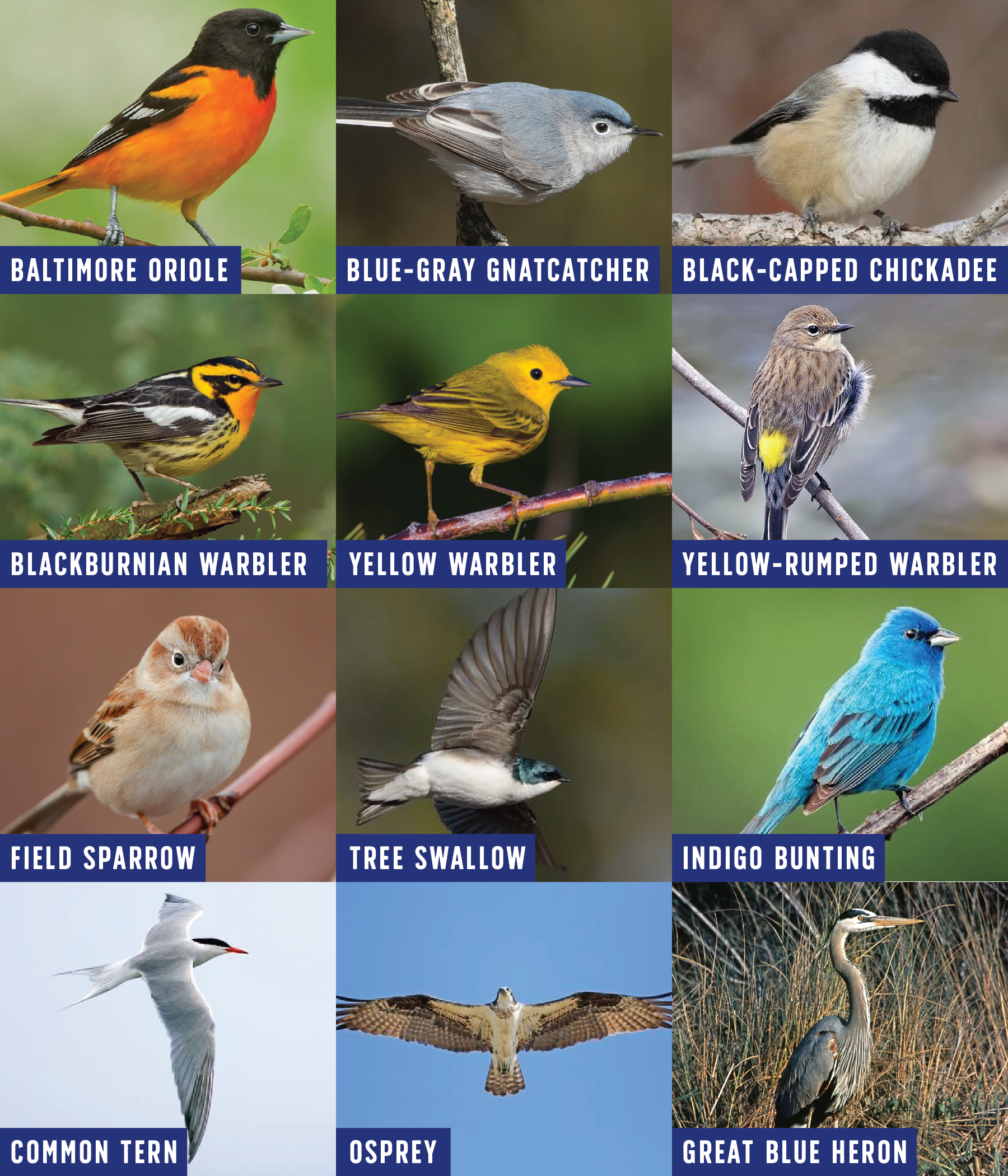A Guide to Birding at the Lemont Quarries
Are you one of the many people who picked up birding during the pandemic?
With nowhere to go and nothing to do, picking up your binoculars was an excellent way to slow down and connect with nature. Well, once you start, it’s hard to stop and you can find many unique species all over Lemont. Whether you’re new to birding or a renowned ornithologist, we’ve put together a guide for birding in Lemont.
When the limestone quarries in Lemont closed at the turn of the 20th century, the canal and 60-90 foot deep quarries filled with water and nature rightfully took back its claim over the area. Lemont Quarries is now managed in partnership with The Forge and a beautiful system of trails to supplement their incredible adventure park.
To guide our own birding excursion, we partnered with Wild Birds Unlimited in Palos Park (WBU). WBU is a family-run business that has served the south suburban Chicago birding community for over 30 years. Owners Mel and Laura showed us the ropes and helped us ID over a dozen different species in our hour-long excursion. That’s Mel pointing the way in the pic above!
WHERE TO BEGIN
To start, you’ll need some binoculars! WBU has some great options, but your grandpa’s binoculars from the basement will work just fine. The first step is to focus your binoculars correctly: close your right eye, and use the wheel on the top to focus your left eye. Then close your left eye and use the wheel on the right side to focus your right eye. Now you’re set!
Next, find yourself some trees. If you can spot an oak tree, that is a great place to start, as more than 4,000 different insects and animals call oak trees home, or head on over to Lemont Quarries. This map outlines a short walk (half-mile in and out) around the Quarries that are excellent for birding.
WHAT YOU’LL SEE
Spring is an excellent time to spot birds heading back north for the summer. During spring migration you’ll catch all varieties of the adorable Warbler family, Orioles, and the return of the vibrant Indigo Bunting. Check out the photo summary of some of the birds you might find in the Quarries. On our walk in early May we saw:
Warblers! Yellow Warblers, Yellow Rump Warbler (aka butter butt), Blackburnian Warblers, Black-Throated Green Warblers
Indigo bunting
Field and Song sparrows
Orioles
Blue-gray gnatcatcher
Chickadees
Tree swallow
Killdeer
Terns (you’ll see them over the water as they dive to catch prey)
Heron
Osprey
Turkey vultures
HOW TO IDENTIFY BIRDS
When you spot a bird, you’ll want to take the time to notice the defining characteristics like eye stripe, throat color, and belly color. Most birds can also be identified by their songs such as the Yellow Warbler’s song mimicking “sweet sweet sweet a little more sweet” and Chickadee’s song of “phoebe”. Keep your eyes on the bird as you raise your binoculars for easier identification.
If you’re interested in training your ear, download Merlin, a free app that can help you identify a bird by recording its song — think Shazaam for birds — by its characteristics or by sharing information about the birds in your area.
HOW TO SUPPORT THE BIRDS
If you love birding in the Lemont Quarries and want to make this area an even better place for birds, consider volunteering with Friends of the Forge! Their restoration efforts help to clear invasive species and plant native plants that birds and the insects they love to eat call home. If you’re looking for ways to support birds at home, consider participating in No Mow May, or picking up the seeds and treats they love from WBU.




